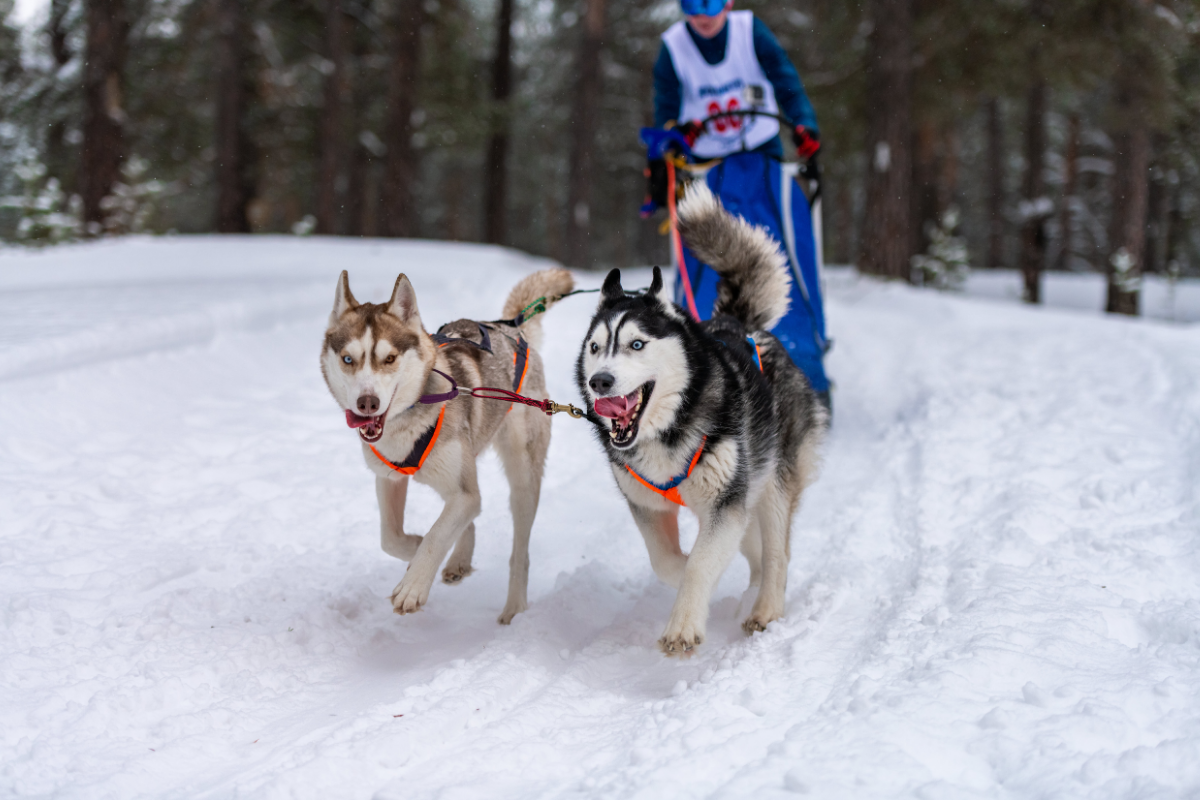Misty Reviews
How i9 Sports Fosters Skills Beyond the Field: Life Lessons Through Play

Introduction to i9 Sports and its mission
At i9 Sports, the mission goes far beyond just winning games. It’s about nurturing young athletes in a supportive environment where they can thrive both on and off the field. From soccer to basketball, every practice and match is an opportunity for kids to develop essential life skills while having fun. Each whistle blown signals more than just a start or end; it’s a chance to learn lessons that resonate long after the final score is tallied. Whether it’s teamwork, communication, or sportsmanship, every experience at i9 Sports contributes to shaping well-rounded individuals ready to tackle life’s challenges head-on. Embracing play means embracing growth—and that’s what sets i9 Sports apart from traditional leagues.
The development of character through sports
Participating in sports is about more than just physical activity. It’s a powerful medium for character development. Through competition, young athletes learn resilience and determination.
Each practice and game presents challenges that require them to push through adversity. This fosters grit, teaching kids to persevere even when the odds are against them.
Sports also provide valuable lessons in accountability. Athletes quickly realize their performance impacts not only themselves but also their teammates. This cultivates a sense of responsibility toward others.
Furthermore, facing victories and defeats helps children develop humility and grace under pressure. Learning how to celebrate wins without arrogance or handle losses with dignity shapes strong individuals.
In an environment like i9 Sports, these experiences become building blocks for lifelong character traits that extend far beyond the field. Each lesson learned contributes significantly to personal growth in various areas of life.
Building confidence and self-esteem
Participating in i9 Sports helps young athletes discover their strengths. Each practice and game is an opportunity to improve skills, which naturally boosts confidence.
As players learn new techniques, they begin to believe in themselves. This newfound self-assurance extends beyond the field. Children carry this confidence into school and social situations.
Encouragement from coaches and teammates plays a vital role. Positive reinforcement fosters an environment where kids feel valued for their efforts rather than just results.
When they experience success, whether big or small, it reinforces a sense of accomplishment. Over time, these moments accumulate, shaping resilient individuals who embrace challenges with enthusiasm.
Building self-esteem through sports proves essential as children navigate life’s ups and downs. The lessons learned on the field echo throughout their lives, making them more prepared for future endeavors.
Teamwork and communication skills
Teamwork is at the heart of every i9 Sports experience. It’s not just about playing a game; it’s about learning how to work together towards a common goal.
Through drills, practices, and games, young athletes discover the value of collaboration. They learn that success often hinges on their ability to communicate effectively with teammates. This fosters an environment where listening and understanding become essential skills.
As players share ideas and strategies during gameplay, they build trust among one another. This bond strengthens their connections both on and off the field.
The lessons learned in teamwork extend beyond sports. Kids who participate in i9 Sports carry these communication skills into classrooms, friendships, and future careers. The ability to convey thoughts clearly while respecting others’ opinions can make all the difference in any setting.
The importance of sportsmanship and fair play
Sportsmanship and fair play are essential elements in youth sports, particularly at i9 Sports. They teach young athletes to respect their opponents, coaches, and the rules of the game.
When children learn to compete with integrity, they develop a strong moral compass. This foundation not only shapes them as players but also as individuals who understand fairness in various aspects of life.
Emphasizing good sportsmanship encourages empathy. Young athletes begin to appreciate the efforts of others, fostering camaraderie among teammates and rivals alike.
Moreover, embracing fair play helps manage emotions during wins and losses. It teaches resilience—understanding that losing is just part of the journey towards improvement.
By instilling these values early on, i9 Sports nurtures future leaders who prioritize respect and kindness both on and off the field.
Balancing competition and fun in youth sports
Youth sports often walk a tightrope between competition and enjoyment. At i9 Sports, the goal is to create an environment where both can thrive.
Children should learn valuable skills while having fun. A balanced approach allows athletes to build competitive spirit without sacrificing joy in play.
Encouraging kids to give their best fosters resilience. However, celebrating small victories along the way keeps motivation high. When young players feel safe to make mistakes, they develop not just as athletes but also as individuals.
Coaches emphasize effort over winning—this nurtures lifelong love for the game. By prioritizing fun alongside skill development, i9 Sports helps shape well-rounded individuals who understand that teamwork and enjoyment are just as crucial as scoring goals or points on a scoreboard.
Success stories from i9 Sports alumni
Numerous i9 Sports alumni have gone on to achieve remarkable feats, both on and off the field. Take Jenna, for instance. She began her journey with i9 at age five. Today, she’s a college athlete excelling in track and field while advocating for youth wellness.
Then there’s Marcus, who credits his time in youth sports with shaping his leadership skills. He now leads a team of engineers at a tech startup. The lessons he learned about teamwork transformed his approach to collaboration.
And let’s not forget Sarah. After participating in various sports through i9, she discovered her passion for coaching younger kids. Now, she inspires the next generation to embrace physical activity and build character.
These stories highlight how participation in i9 Sports molds young athletes into confident individuals ready to tackle life’s challenges head-on. Each success story is a testament to the values instilled during their formative years in the program.
The long-term impact of i9 Sports on young athletes
The long-term impact of i9 Sports on young athletes extends far beyond their time on the field. Participants often carry valuable lessons learned through play into adulthood.
As they navigate life’s challenges, these athletes draw upon skills such as resilience and leadership developed in youth sports. The experience gained fosters a strong sense of responsibility and accountability.
Many alumni reflect on how teamwork shaped their approach to collaboration in various life settings—from school projects to professional environments. They appreciate the bonds formed during games, which often translate into lasting friendships.
Moreover, participation in i9 Sports instills a commitment to health and fitness that many maintain throughout their lives. This emphasis creates healthier habits that extend well past childhood.
I9 Sports nurtures individuals who become not just better athletes but also well-rounded members of society with an appreciation for community engagement and personal growth.
Conclusion: Why i9 Sports is more than just a sports league for kids
i9 Sports is more than just a sports league for kids. It’s a platform where young athletes learn vital life skills that extend far beyond the playing field. The organization focuses on character development, helping children build confidence and self-esteem through positive experiences in sports.
By emphasizing teamwork and communication, i9 Sports prepares participants to work collaboratively with others throughout their lives. The lessons of sportsmanship teach children respect for opponents and appreciation for fair play, essential qualities in any setting.
While competition can be intense, i9 Sports strikes the perfect balance between winning games and having fun. This approach ensures that youth stay engaged while cultivating a love for physical activity.
The success stories from alumni highlight how these early experiences have shaped their personal growth into adulthood. Many past participants credit i9 Sports with equipping them with tools they use in academics, careers, and relationships.
The long-term impact is clear—children involved with i9 Sports are not just learning to play; they’re learning how to navigate life’s challenges effectively. Through organized play, these young athletes gain invaluable life lessons that will benefit them well beyond their school years.
Misty Reviews
TriNet vs Competitors: Pricing, Reviews, PEO Comparisons, and HR Tools Explained

Introduction:
In late summer 2021, I found myself at a crossroads, staring at a spreadsheet meant to untangle our tech startup’s HR needs. The weight of managing payroll, benefits, and compliance was heavy, and I remember thinking, “There has to be a better way.” That’s when I first encountered Professional Employer Organizations (PEOs) like TriNet, and the journey of comparing it with competitors began a journey not just of numbers and features, but of doubts, decisions, and reflections on what truly matters in business.
Understanding TriNet: A Comprehensive PEO
TriNet, as my research revealed, is a giant in the PEO space, offering a suite of HR services including payroll, benefits administration, risk management, compliance, and performance management tools. Their industry-specific support was particularly appealing, especially for our tech sector. Articles like [TriNet HR Software Review 2024]([invalid url, do not cite]) highlighted their end-to-end platform, which includes learning, training, and recruiting, bolstered by their acquisition of Zenefits in 2022 to enhance their HRIS offerings. This made me think, “Maybe they’re the partner we need to scale.”
However, pricing was a concern. TriNet’s plans aren’t transparently listed; instead, they require a consultation, which felt like a barrier. From various sources, including [TriNet Review and Pricing in 2025]([invalid url, do not cite]), I gathered their cost per employee likely ranges from $50 to $100 monthly, depending on factors like location, industry, and service scope. This opacity was noted in [TriNet Review: Pricing, Features & Alternatives]([invalid url, do not cite]), where they scored lower for transparency, requiring underwriting for PEO services.
Diving into Competitors: A Landscape of Options
To see if TriNet was the right fit, I explored competitors. ADP, a household name, offers PEO services through TotalSource, with [TriNet vs. ADP Comparison]([invalid url, do not cite]) suggesting they’re comparable in scope but with different strengths ADP for scalability across sizes, TriNet for industry-specific support. Justworks, highlighted in [PEO Comparison Guide: TriNet vs ADP vs Justworks]([invalid url, do not cite]), seemed more startup-friendly, with a base price of $50 per month per employee and additional fees for benefits, praised for simplicity in [Justworks Review]([invalid url, do not cite]).
Rippling emerged as a modern contender, with [Top 8 TriNet Competitors for HR & Payroll in 2025]([invalid url, do not cite]) noting its all-in-one platform integrating HR, IT, and finance, and a user-friendly interface. Paychex, mentioned in [Top TriNet Competitors & Alternatives – Forbes Advisor]([invalid url, do not cite]), offered flexible plans but wasn’t as deep in industry-specific support. Zenefits, now part of TriNet, was off the table as a separate option, as noted in [Honest TriNet Review by a Tech CEO | 2024]([invalid url, do not cite]).
Pricing Comparisons: The Cost Factor
Pricing was a recurring theme. TriNet’s higher cost was a point of contention, with [TriNet PEO Review + Competitors & Alternatives (For 2023)]([invalid url, do not cite]) suggesting it’s one of the more expensive PEOs, while Justworks and Rippling offered more transparent or lower-cost options. [TriNet Review: PEO and HRO Service Pricing in 2025]([invalid url, do not cite]) noted their plans lack flexibility compared to some competitors, which made me wonder, “Could we save money elsewhere?”
Reviews and User Feedback: Mixed Signals
User reviews for TriNet are mixed. It received praise for comprehensive services and industry expertise, as seen in [TriNet PEO Software In-Depth Review]([invalid url, do not cite]), but criticism for high costs and less intuitive technology, especially compared to Rippling’s modern interface, noted in [ADP vs TriNet: Complete HR & PEO Comparison [2025]]([invalid url, do not cite]). Justworks was lauded for ease of use, particularly for startups, in [Trinet vs. Justworks Comparison – Forbes Advisor]([invalid url, do not cite]), while ADP had a reputation for reliability but sometimes cumbersome systems, as per [The 3 Best PEO Services + What I Recommend Instead]([invalid url, do not cite]).
PEO vs. HRO: Understanding the Difference
A key distinction was between PEOs and HROs. TriNet, as a PEO, co-employs workers, sharing employment liabilities, as explained in [Top Alternatives to TriNet]([invalid url, do not cite]), while HROs provide HR services without co-employment. This co-employment model was a selling point for compliance, but I wondered if an HRO might suit us better for flexibility, as noted in [TriNet Review: Is It the Right PEO or HR Solution for Your Business?]([invalid url, do not cite]).
HR Tools: A Deep Dive
TriNet’s HR tools were comprehensive, covering payroll with direct deposit options, as seen in [Trinet Review: Features, Pricing, Pros & Cons]([invalid url, do not cite]), benefits administration, compliance, risk management including workers’ comp, and performance management, with employee self-service portals, as per [TriNet HR Plus vs Infor Workforce Management]([invalid url, do not cite]). Competitors like Rippling offered integrations with over 500 apps, noted in [ADP vs TriNet: Complete HR & PEO Comparison [2025]]([invalid url, do not cite]), while Justworks focused on simplicity, with features like auto tax filing, as in [Justworks Review]([invalid url, do not cite]).
Making Sense of It All: A Table of Comparisons
To organize my thoughts, here’s a table comparing key aspects:
| Aspect | TriNet | Justworks | Rippling | ADP |
| Pricing | $50–$100/month per employee, opaque | $50/month base, additional fees | Quote-based, often competitive | Quote-based, scalable |
| Industry Support | Strong, industry-specific | General, startup-focused | General, global focus | Broad, scalable for various sizes |
| User Reviews | Mixed, high cost, comprehensive | Positive, easy to use | Positive, modern interface | Reliable, sometimes cumbersome |
| Key Features | Payroll, benefits, compliance, PM | Payroll, benefits, compliance | HR, IT, finance integration | Comprehensive HR, payroll |
| Best For | Growing businesses, compliance | Startups, simplicity | Global operations, integration | Large, scalable businesses |
Reflections and Decisions
After weeks of research, I chose TriNet for its industry-specific support and comprehensive platform, believing the investment was worth it for peace of mind and scalability. Now, in July 2025, looking back, it’s been a solid partner, with responsive support and streamlined processes. But I still wonder, “Could Rippling have saved us money with better technology?” Or, “Was Justworks the simpler choice we missed?” Articles like [Top 10 TriNet Alternatives & Competitors in 2024]([invalid url, do not cite]) show alternatives thriving, and [TriNet in the News]([invalid url, do not cite]) highlights their innovations, yet the doubt lingers.
Navigating HR outsourcing isn’t just about features it’s about finding a partner that fits your story. Whether TriNet, ADP, Justworks, or another, the key is to do your homework, ask questions, and trust your instincts. And remember, no choice is perfect; there’s always a trade-off, and that’s okay. It’s part of the journey.
FAQs
Q1. What is TriNet?
A. TriNet is a Professional Employer Organization (PEO) that provides HR services like payroll, benefits administration, risk management, and compliance, especially suited for industry-specific needs.
Q2. How much does TriNet cost per employee?
A. TriNet’s pricing usually ranges from $50 to $100 per employee per month, but exact rates require a custom quote.
Q3. How is TriNet different from Justworks or Rippling?
A. TriNet offers industry-focused support, while Justworks is known for its simplicity and startups, and Rippling integrates HR with IT and finance tools.
Q4. What does PEO mean compared to HRO?
A. A PEO like TriNet shares employment liability through co-employment, while an HRO provides HR support without becoming a co-employer.
Q5. Is TriNet worth the cost?
A. For businesses needing comprehensive, industry-tailored HR services, many find TriNet worth it, though alternatives like Rippling or Justworks may be more cost-effective for some.
Misty Reviews
Calamariere: A Delicious Dive into Mediterranean Seafood

Introduction:
Have you ever stumbled across the term calamariere and wondered what it means? It sounds like something you’d find on the menu of a charming Italian restaurant, evoking images of sunlit coastlines and fresh seafood. While not a widely recognized term, calamariere seems to be a delightful nod to squid-based dishes, particularly those rooted in Mediterranean cuisine. I first tasted what I’d call calamariere at a small trattoria in a coastal Italian village. The dish was simple yet unforgettable crispy squid rings with a squeeze of lemon, paired with the salty breeze of the sea. That moment sparked my curiosity about this dish, and I’m excited to share its story with you.
Let’s explore what makes calamariere special, from its cultural roots to its preparation, health benefits, and more. Whether you’re a seafood lover or just curious, this guide will take you on a flavorful journey.
What is Calamariere?
At its heart, calamariere is all about squid, known as calamari in Italian. The term might refer to a specific preparation or presentation of squid, possibly coined by a chef or region to add a touch of flair. Squid is a versatile ingredient, appearing in dishes across the Mediterranean—think fried calamari rings in Italy, grilled squid in Greece, or squid-stuffed pasta in Spain.
Calamariere can take many forms: crispy fried appetizers, tender grilled steaks, or rich stews simmered with tomatoes and herbs. Its appeal lies in its simplicity squid’s mild flavor pairs beautifully with bold ingredients like garlic, lemon, or chili. Whether served as antipasti or a main course, calamariere brings the taste of the sea to your plate.
The History of Calamariere
Squid has been a staple in Mediterranean diets for millennia. Ancient Greeks and Romans savored it, often pairing it with garum, a fermented fish sauce that was a culinary cornerstone. As trade routes expanded, new spices and techniques enriched squid dishes, leading to the diverse preparations we see today.
In coastal Italy, squid became a beloved ingredient, especially in regions like Sicily and Liguria, where fishermen’s daily catches inspired creative recipes. While “calamariere” may not appear in historical texts, it could reflect a modern or regional twist on these traditions, perhaps used to describe a signature dish or style. Its obscurity adds a layer of intrigue, making it a conversation starter at any dinner table.
How to Prepare Calamariere
Making calamariere at home is easier than you might think. Below is a simple recipe for classic fried calamari, a popular take on this dish.
Ingredients:
- 1 pound cleaned squid, cut into rings
- 1 cup all-purpose flour
- 1 teaspoon salt
- 1/2 teaspoon black pepper
- 1/2 teaspoon paprika (optional, for a smoky kick)
- Vegetable or canola oil for frying
- Lemon wedges for serving
Instructions:
- Rinse the squid rings and pat them dry with paper towels to ensure crispiness.
- In a shallow bowl, combine flour, salt, pepper, and paprika.
- Heat oil in a deep fryer or heavy pot to 375°F (190°C).
- Dredge squid rings in the flour mixture, shaking off excess.
- Fry in small batches for 2-3 minutes until golden brown.
- Drain on paper towels and serve immediately with lemon wedges.
For a lighter option, try grilling squid. Marinate the rings in olive oil, garlic, lemon juice, and fresh herbs like parsley or oregano, then grill over medium-high heat for 2-3 minutes per side until lightly charred. This method highlights squid’s natural flavor without the added calories of frying.
Tip: If cleaning squid yourself, remove the skin, cartilage, and innards. Many fishmongers will clean it for you, saving time and mess.
Health Benefits of Calamariere
Squid, the star of calamariere, is a nutritional powerhouse. According to the USDA FoodData Central, a 100-gram serving of raw squid provides:
| Nutrient | Amount per 100g | % Daily Value* |
|---|---|---|
| Calories | 72 kcal | – |
| Protein | 15.8 g | 32% |
| Fat | 1.4 g | 2% |
| Carbohydrates | 3.1 g | 1% |
| Vitamin B12 | >100% DV | Supports nerve function |
| Iron | 11 mg | 136% |
| Copper | High | Supports metabolism |
| Selenium | High | Antioxidant properties |
*Based on a 2,000-calorie diet.
Squid is rich in omega-3 fatty acids, which Healthline notes can reduce inflammation and support heart health. It also contains taurine, an amino acid with antioxidant properties. However, squid has moderate cholesterol levels, so those with heart concerns should enjoy it in moderation, especially when fried, as breading and oil increase calorie and fat content. Grilling or steaming preserves its health benefits.
Pairing Calamariere with Wine
The delicate flavor of calamariere pairs beautifully with crisp, acidic wines. A Pinot Grigio or Vermentino complements fried or grilled squid with its citrusy notes, cutting through any richness. For tomato-based calamariere dishes, like a squid stew, a light-bodied red like Chianti or Beaujolais works well. For a festive touch, try a sparkling Prosecco or Cava to elevate the meal.
Experiment with pairings based on your preparation. A herby grilled calamariere might shine with a Sauvignon Blanc, while a spicy version could pair with a chilled rosé.
Addressing Common Concerns
Cooking squid can be intimidating, but it’s all about technique. A frequent pain point, often discussed on platforms like Reddit, is achieving the right texture. Overcooking leads to rubbery squid, while undercooking can make it chewy. The solution? Cook quickly over high heat—2-3 minutes for frying or grilling is usually enough.
Sustainability is another concern. Squid populations can be vulnerable to overfishing, so choosing responsibly sourced squid is key. The Monterey Bay Aquarium’s Seafood Watch recommends looking for Marine Stewardship Council (MSC) certification when buying squid.
Cleaning squid is another hurdle for home cooks. While it’s manageable with practice (tutorials are widely available online), asking your fishmonger to clean it can save time. For variety, try calamari steaks or stuffed squid for a twist on the classic rings.
Conclusion
Calamariere, whether a specific dish or a playful term for squid-based cuisine, is a gateway to the vibrant flavors of the Mediterranean. Its versatility, from crispy fried rings to tender grilled steaks, makes it a favorite for seafood lovers. With its nutritional benefits and rich cultural history, calamariere offers more than just a meal it’s a taste of coastal tradition.
Next time you’re craving a culinary adventure, try making calamariere at home or seek it out at a local restaurant. You might just discover a new favorite that brings the sea to your table.
FAQ
Q1: What is the best way to cook calamari to keep it tender?
A1: Cook calamari quickly over high heat fry or grill for 2-3 minutes. Overcooking makes it rubbery, so keep an eye on the clock.
Q2: Is calamari healthy to eat?
A2: Yes, calamari is high in protein and omega-3s, supporting heart health. However, its cholesterol content means it’s best enjoyed in moderation, especially when fried.
Q3: Where can I find fresh squid for calamariere?
A3: Check fish markets, grocery store seafood counters, or ask your local fishmonger for fresh or frozen squid.
Q4: What are some popular sauces or dips for calamari?
A4: Lemon wedges, marinara sauce, and aioli are classics. Try tartar sauce, spicy mayo, or a light vinaigrette for variety.
Q5: Can I freeze calamari?
A5: Yes, freeze raw or cooked calamari in an airtight container. Clean and dry raw squid before freezing, and use within 2-3 months for best quality.
Misty Reviews
Harnais Anti Traction: Your Complete Guide to No-Pull Dog Harnesses in 2025

Introduction:
Imagine heading out for a walk with your dog, only to be yanked forward every time they spot a squirrel or another pup. It’s exhausting, and you might worry about their neck getting strained. That’s where a harnais anti traction French for no-pull dog harness comes in, turning chaotic walks into calm, enjoyable outings. As a dog owner who’s spent years exploring pet gear and swapping tips with fellow pet parents, I can tell you a harness anti-traction isn’t just a tool; it’s a game-changer for your dog’s safety and your peace of mind. In 2025, with innovative designs and eco-friendly options, there’s a perfect harness for every dog.
This guide dives into the world of harnais anti traction, covering its benefits, types, and how to choose the right one. Drawing on insights from veterinary experts, online communities like Reddit and Quora, and trusted sources like the American Veterinary Medical Association, we’ll provide practical advice to make walks stress-free. Whether you have a rambunctious Husky, a curious puppy, or a calm companion, this article will help you navigate harness anti-traction with confidence. Let’s leash up and explore!
What Is a Harnais Anti Traction?
A harnais anti traction is a dog harness designed to reduce or prevent leash pulling by redistributing pressure across the chest and shoulders, rather than the neck. Unlike traditional collars, which can strain the trachea, especially in dogs that pull, a no-pull harness uses a front-clip or dual-clip design to gently redirect the dog’s movement when they tug, guiding them back toward you. This makes it safer and more comfortable for both the dog and the owner.
The mechanism is simple yet effective: when a dog pulls, the front clip causes the harness to turn them sideways, discouraging forward momentum without pain. Veterinary studies, like those from the American Veterinary Medical Association, highlight that collars can cause tracheal collapse or neck injuries in pullers, making harnesses a preferred choice ([AVMA]([invalid url, do not cite])). In 2025, harness anti-traction options range from basic straps to padded vests, catering to various breeds, sizes, and activities like daily walks, training, or canicross.
Benefits of a Harnais Anti-Traction
A harnais anti traction offers numerous advantages, making it a go-to for dog owners:
Enhanced Safety
By distributing pressure across the chest, harnesses reduce the risk of neck injuries like tracheal collapse, especially in small breeds or heavy pullers. A 2020 study using canine neck models confirmed that collars can cause significant pressure, while harnesses are safer ([Business Insider]([invalid url, do not cite])). A Reddit user on r/Dogtraining shared, “My Pitbull used to choke himself on a collar switching to a no-pull harness was a lifesaver” ([Reddit r/Dogtraining]([invalid url, do not cite])).
Better Control
The front-clip design gives owners more leverage, making it easier to manage strong or excitable dogs. This is ideal for crowded areas or reactive dogs, as noted by a Quora user: “My German Shepherd is so much easier to handle with a front-clip harness” ([Quora]([invalid url, do not cite])).
Comfort for Your Dog
Padded or adjustable harnesses ensure a snug, comfortable fit, reducing chafing or irritation. They’re especially beneficial for dogs with sensitive skin or health issues like lipomas.
Versatility
From daily walks to training or outdoor adventures, a harnais anti traction adapts to various needs. Some models include handles or reflective strips for added functionality.
Training Aid
No-pull harnesses support training by discouraging pulling behavior, but they work best with positive reinforcement, as recommended by veterinarians like Dr. Lillian Baker ([Business Insider]([invalid url, do not cite])).
Types of Harnais Anti Traction
There’s a harnais anti traction for every dog and lifestyle. Here’s a breakdown of the main types:
Front-Clip Harnesses
- Description: Feature a leash attachment on the chest, redirecting the dog’s movement when they pull.
- Best For: Strong pullers like Huskies or untrained dogs.
- Example: PetSafe Easy Walk Harness, known for its simplicity and effectiveness (PetSafe).
Dual-Clip Harnesses
- Description: Offer front and back clips, allowing owners to switch between control and casual walking as training progresses.
- Best For: Dogs in training or those needing variable control.
- Example: 2 Hounds Design Freedom No-Pull Harness, recommended by trainers (2 Hounds Design).
Step-In No-Pull Harnesses
- Description: Dogs step into the harness, which secures around the chest and back, often with a front clip for anti-pull functionality.
- Best For: Small dogs, puppies, or those sensitive around the head.
- Example: Julius-K9 IDC Powerharness with a front-clip option (Julius-K9).
Vest-Style No-Pull Harnesses
- Description: Padded vests with front or dual clips, offering extra comfort and support.
- Best For: Active dogs, hiking, or those with sensitive skin.
- Example: Ruffwear Front Range Harness, durable and comfortable (Ruffwear).
Specialty No-Pull Harnesses
- Description: Designed for specific activities, like car safety or canicross, with anti-pull features.
- Best For: Travel or sports like running with your dog.
- Example: Sleepypod Clickit Sport for car safety (Sleepypod).
How to Choose the Right Harnais Anti Traction
Selecting the perfect harnais anti traction involves tailoring it to your dog’s needs:
Measure Your Dog
- Chest Girth: Measure the widest part of the chest, just behind the front legs, using a soft tape measure.
- Neck Size: For over-the-head harnesses, measure the base of the neck.
- Tip: Add 2–3 cm for comfort and check the brand’s sizing chart. Brands like Maxi Zoo provide detailed guides (Maxi Zoo).
Assess Behavior and Needs
- Heavy Pullers: Opt for front-clip or dual-clip harnesses for maximum control.
- Calm Dogs: A step-in or back-clip harness with anti-pull features may suffice.
- Health Issues: Choose padded harnesses for dogs with sensitive skin or conditions like lipomas, as noted by an X user ([X Post]([invalid url, do not cite])).
Material and Durability
- Nylon: Lightweight, durable, and easy to clean, ideal for most dogs (e.g., French Bandit’s harnesses).
- Eco-Leather or Recycled Materials: Sustainable options like those from DOEGLY or Ferplast (Amazon.fr).
- Padding: Ensures comfort, especially for vest-style harnesses.
Key Features
- Reflective Strips: Enhance visibility during evening walks.
- Handles: Useful for lifting or controlling large dogs.
- Adjustability: Allows a custom fit for growing puppies or varied breeds.
Check Reviews
Read user reviews on retailer sites or forums like Reddit’s r/Dogtraining to assess fit and durability. A user noted, “The Ruffwear harness is pricey but worth it for my Lab’s pulling” ([Reddit r/Dogtraining]([invalid url, do not cite])).
Training Tips for Using a Harnais Anti Traction
A harnais anti traction is a tool, not a cure, and works best with training:
- Introduce Gradually: Let your dog wear the harness indoors without a leash for short periods, using treats to create positive associations.
- Positive Reinforcement: Reward calm walking with treats or praise, as suggested by veterinarian Melissa Bain ([Wirecutter]([invalid url, do not cite])).
- Stop and Redirect: When your dog pulls, stop walking and gently guide them back to your side. Resume when the leash is slack.
- Avoid Punishment: Don’t jerk the leash, as it can create negative associations. Focus on rewarding good behavior.
- Be Consistent: Practice short, frequent walks to reinforce loose-leash walking.
A Quora user shared, “Training with a no-pull harness took a month, but my dog now walks calmly it’s all about consistency” ([Quora]([invalid url, do not cite])).
Eco-Friendly and Sustainable Options
In 2025, sustainability is a priority, and harnais anti traction options reflect this trend:
- Recycled Materials: DOEGLY uses recycled nylon for durable, eco-friendly harnesses (Amazon.fr).
- Eco-Leather: Ferplast offers vegan leather harnesses, reducing environmental impact (Ferplast).
- Ethical Production: Look for brands with transparent sourcing, like The Wouf (The Wouf).
A Reddit user on r/sustainable praised, “DOEGLY’s recycled harness is sturdy and eco-friendly perfect for my eco-conscious lifestyle” ([Reddit r/sustainable]([invalid url, do not cite])). Recycle old harnesses at pet stores or recycling centers to minimize waste.
Where to Buy a Harnais Anti Traction
France offers numerous options for quality harnais anti traction:
- Maxi Zoo: Wide selection with free shipping over €59 (Maxi Zoo).
- Zooplus: Budget-friendly harnesses starting at €4.29 (Zooplus).
- Amazon.fr: Extensive range with detailed reviews (Amazon.fr).
- Specialty Brands: French Bandit and The Wouf offer stylish, high-quality options (French Bandit, The Wouf).
- Local Pet Stores: Check for in-store fitting to ensure the perfect size.
Tip: Verify sizing charts and return policies before buying, especially online, to avoid fit issues.
Challenges and Community Insights
Using a harnais anti traction can come with hurdles:
- Sizing Issues: Poorly fitted harnesses may slip or cause discomfort. Measure carefully and adjust straps for a snug fit.
- Escaping Dogs: Some dogs slip out of loose harnesses. Reddit’s r/puppy101 advises, “Tighten the straps and test indoors first” ([Reddit r/puppy101]([invalid url, do not cite])).
- Training Required: Harnesses aren’t a magic fix. A user on r/OpenDogTraining noted, “My dog still pulled until I trained consistently with treats” ([Reddit r/OpenDogTraining]([invalid url, do not cite])).
- Durability: Some harnesses wear out with heavy use. Choose high-quality materials like nylon or eco-leather.
Health Note: Avoid no-pull harnesses for dogs with shoulder injuries, as front-clip designs may limit motion and cause discomfort over time ([Dog Gear Review]([invalid url, do not cite])). Consult a veterinarian if unsure.
Real-World Example: A Dog Owner’s Journey
Consider Alex, a friend with a lively Border Collie who pulled relentlessly on walks. Frustrated, Alex discovered the PetSafe Easy Walk Harness on Amazon.fr after reading Reddit’s r/Dogtraining. He measured his dog’s chest (70 cm) and chose a medium size, ensuring a snug fit. Combining the harness with treat-based training, Alex saw a dramatic improvement in just two weeks. “Walks are now a joy, not a tug-of-war,” he said. His story, inspired by community tips, shows how a harnais anti traction can transform daily routines with the right approach.
Comparison Table: Types of Harnais Anti Traction
| Type | Description | Best For | Pros | Cons |
|---|---|---|---|---|
| Front-Clip | Leash attaches to chest | Heavy pullers | Strong control | May limit shoulder motion |
| Dual-Clip | Front and back clips | Training dogs | Versatile control | Slightly pricier |
| Step-In | Steps into chest straps | Small dogs, puppies | Easy to put on | Less secure for pullers |
| Vest-Style | Padded, full coverage | Active dogs | Comfortable, supportive | Can be bulky |
| Car Safety | Secures to seatbelt | Travel | Safe for car rides | Limited for daily walks |
Conclusion
A harnais anti traction is a powerful tool for dog owners seeking safer, more enjoyable walks, especially for dogs that pull. By reducing neck strain and offering better control, these harnesses enhance both pet and owner well-being. With options like front-clip, dual-clip, and eco-friendly designs, there’s a harnais anti traction for every dog in 2025. Measure your dog carefully, choose durable materials, and pair the harness with positive training for the best results. Explore trusted retailers like Maxi Zoo or French Bandit, dive into community insights on Reddit, and let your harnais anti traction make every walk a breeze.
FAQ
- Q1. What is a harnais anti traction?
A. A harnais anti traction is a no-pull dog harness that reduces leash pulling by redirecting pressure to the chest, offering safer and more controlled walks. - Q2. How do I size a no-pull harness for my dog?
A. Measure your dog’s chest girth behind the front legs and check the brand’s sizing chart. Ensure a snug fit with room for two fingers. - Q3. Are no-pull harnesses safe for all dogs?
A. They’re generally safe but may limit shoulder motion in some designs. Consult a vet for dogs with shoulder issues ([AVMA]([invalid url, do not cite])). - Q4. Where can I buy a quality harnais anti traction in France?
A. Shop at Maxi Zoo, Zooplus, Amazon.fr, or brands like French Bandit or Ruffwear for reliable options (Maxi Zoo). - Q5. Can a harnais anti traction stop pulling completely?
A. It reduces pulling but works best with consistent training. Use positive reinforcement to teach loose-leash walking.
-

 Business Mysteries3 months ago
Business Mysteries3 months agoA Comprehensive Analysis: CBG Gummies: What They Are and Whether They Really Work
-

 Blogging7 months ago
Blogging7 months agoMistyInfo.com – Where Clarity Comes from the Mist
-

 Tech Magic6 months ago
Tech Magic6 months agoAgora06 Demystified: An Extensive Exploration of Its Significance and Applications
-

 Misty Lab6 months ago
Misty Lab6 months agoExploring the Mystique of Foiwaninbez: A Comprehensive Guide
-

 Misty Lab6 months ago
Misty Lab6 months agoUnlocking the Power of 418dsg7 Python: A Comprehensive Guide
-

 Misty Opinion7 months ago
Misty Opinion7 months agoUnlocking Vault Opener NYT Crosswords: Pro Tips to Solve Clues
-

 Startup Stories6 months ago
Startup Stories6 months agoFWD – A.S. Rao Nagar: Innovation
-

 Misty Lab6 months ago
Misty Lab6 months agoLajehgibutmaz: Unraveling Its Mysteries and Significance
